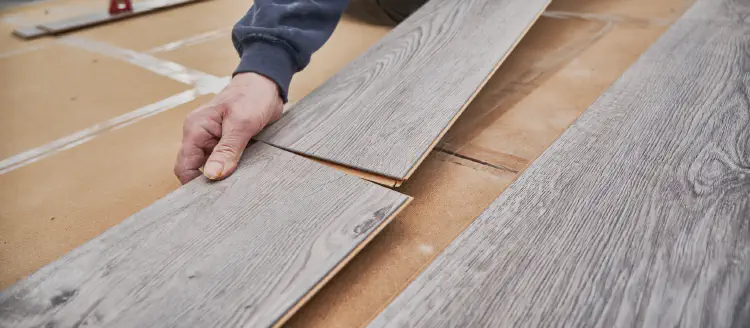
The Basics of Laminate Flooring: A Comprehensive Guide
1. Understanding Laminate Flooring
Laminate flooring is a popular choice for homeowners due to its durability, affordability, and aesthetic appeal. It mimics the look of hardwood, stone, or tile but comes at a fraction of the cost. Laminate flooring consists of multiple layers, including:
- Wear Layer: Protects against scratches
- Photographic Layer: Replicates the desired material’s look
- Core Layer: Made of high-density fiberboard
- Backing Layer: Provides stability
2. How to Determine If Your House Needs Laminate Flooring
Before deciding to install laminate flooring, assess the current state of your floors. Here are some signs that it might be time for an upgrade:
- Visible Wear and Tear: Scratched, dented, or stained floors
- Outdated Style: Floors that are old and out of sync with your home’s decor
- Water Damage: Warping, buckling, or moldy spots
- Noise Issues: Creaky floors indicating possible structural issues
3. Ensuring a Successful Installation
To achieve a flawless laminate flooring installation, follow these steps:
- Preparation is Key: Measure your space accurately and ensure the subfloor is clean, dry, and level.
- Acclimate the Laminate: Let your laminate flooring acclimate to the room’s temperature and humidity for at least 48 hours.
- Use the Right Underlayment: Choose an underlayment that suits your subfloor and the type of laminate.
- Plan Your Layout: Begin installation along the longest wall and stagger the seams of your laminate planks by at least 12 inches.
- Leave Expansion Gaps: Allow a ¼ inch gap between the flooring and walls.
- Proper Tool Usage: Use a laminate flooring cutter, spacers, tapping block, and pull bar.
- Regular Inspection: Check for gaps or misalignment as you install.
4. The Importance of Using the Right Materials
Using high-quality materials is crucial for the longevity and performance of your laminate flooring:
- High-Quality Laminate: Invest in durable laminate with a high AC rating (AC3 for residential, AC4 for commercial).
- Underlayment: Select one that matches your needs—thermal insulation, soundproofing, or moisture resistance.
- Transition Strips: Help create a seamless look between rooms and accommodate expansion gaps.
- Moisture Barrier: Essential for concrete subfloors or moisture-prone areas.
5. Common Issues During Installation
Even with careful preparation, you might encounter some common issues:
- Gapping: Can occur if you don’t leave enough expansion gaps or if the flooring wasn’t acclimated properly.
- Buckling: Happens when there isn’t enough room for the laminate to expand.
- Creaking: Caused by an uneven subfloor or insufficient underlayment.
- Misaligned Planks: May not lock together correctly if not properly aligned.
6. When and Why to Seek Professional Help
While DIY laminate installation is possible, certain scenarios warrant professional help:
- Large Areas: Complex installations in large or irregularly shaped areas.
- Subfloor Issues: Uneven or damaged subfloor that needs repair.
- Tight Timelines: When you need the installation completed quickly.
- Complex Designs: For intricate patterns or multi-room projects.
Pro Tip: Seeking professional help can save you time, money, and frustration, ensuring that your flooring is installed correctly and lasts longer.

